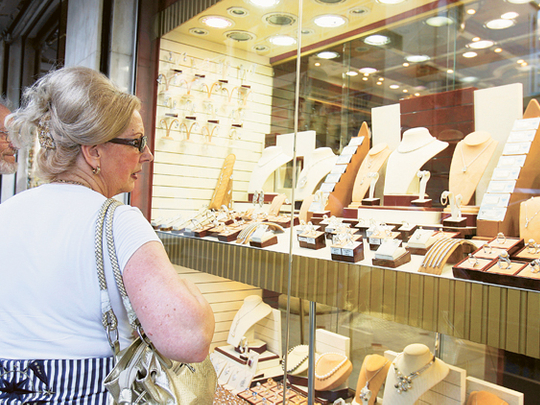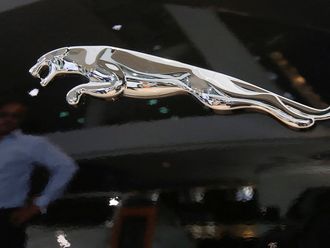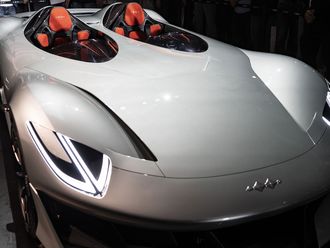
Dubai: If the recent spike in diamond prices was the unkindest cut for local jewellery retailers after what happened to gold rates, they are certainly not allowing it to lay them low. The leading names in the trade are coming up with counter-strategies to help them ride out the price volatility on diamonds.
"We have decided not to go for any major replenishment activity for our diamond jewellery inventory in the short term as a response to the recent price gains," said Cyriac Varghese of Sky Jewellery.
"We will also go slow on our marketing push related to the diamond collections until such time there's an easing on the pricing or we can be assured of higher demand from customers."
If prices remain at current levels or even go higher, an upturn in demand may have to wait until Akshaya Trithiya — a week-long period when consumers from the sub-continent commit to investments in jewellery and precious stones — during May.
"What this gives the local jewellery business is some breathing space to take a call on whether the surge in diamond prices is here to stay or would have lost steam by then," Varghese added.
It's vital for the trade that it gets a handle on the situation at the earliest. Diamond jewellery sales make up between 15 to 20 per cent for leading retailers here. Plus, the margins are fatter than what they can command on gold jewellery.
Market differentials
Things were going swimmingly well for them until mid-November when diamond prices started to shoot up. It was far from being a local phenomenon as a combination of global factors led to it, principal among them being a widening gap between supply and demand.
Better than anticipated demand was apparent in North America and Western Europe during the holiday season late last year, while in China and India diamond sales grew from already high levels.
Matters were not helped either when the world's leading supplier, Diamond Trading Company, went in for a hike in prices of rough diamonds at its latest sight in February. Obviously, this had to rub off on polished diamond prices.
Depending on the weight and caratage of the stones used, diamond jewellery prices are up 13-30 per cent since the fourth quarter of last year.
"Currently diamond jewellery prices are only getting back to pre-recession levels," said Karim Merchant, chief executive officer of Pure Gold Jewellers. "Now we have to wait and watch to see what happens from here on. Customers are not price resistant at the moment, but they are apprehensive," he said.
"Currently they are only hearing about the price rise from retailers, which they feel is an inflated price rise story. Fortunately, we had anticipated this price increase and adapted our design banks to ensure that customers are passed on the minimum, absolute necessary price increases and the rest we are absorbing ourselves by reducing margins."
Price factor: 2010 was a good year
From the perspective of where gold prices — not to mention consumer demand — are now, what happened last year may seem distant memory, albeit a cherished one. But 2010 represented a golden run for the metal in more ways than one.
For the first time in 21 years, the world's central banks turned net buyers of gold, while annual demand surged 9 per cent — despite the steady run up in prices — to total 3,812.2 tonnes and $150 billion (Dh550.9 billion) in value terms.
"This performance was mainly attributable to strong growth in jewellery demand, the revival of the Indian market and strong momentum in Chinese gold demand and a paradigm shift in the official sector," the World Gold Council's recently issued end of year report said.
But gold was not shining as bright in the other geographies. In the Middle East, consumer demand did feel the slow burn of rising prices, especially during the crucial fourth quarter. This did have an impact on jewellery sales, the report said. "After a positive first quarter of 2010, gold jewellery demand across these markets subsided and the fourth quarter continued this trend," it added.
The UAE and Saudi Arabia both saw declines of 6 per cent for the full year. "The relatively strong performance of the 22-carat segment of gold jewellery across the region suggested that non-domestic consumers were more immune to the price effects than domestic consumers, for whom 21-carat gold jewellery is the most popular," the report said.












